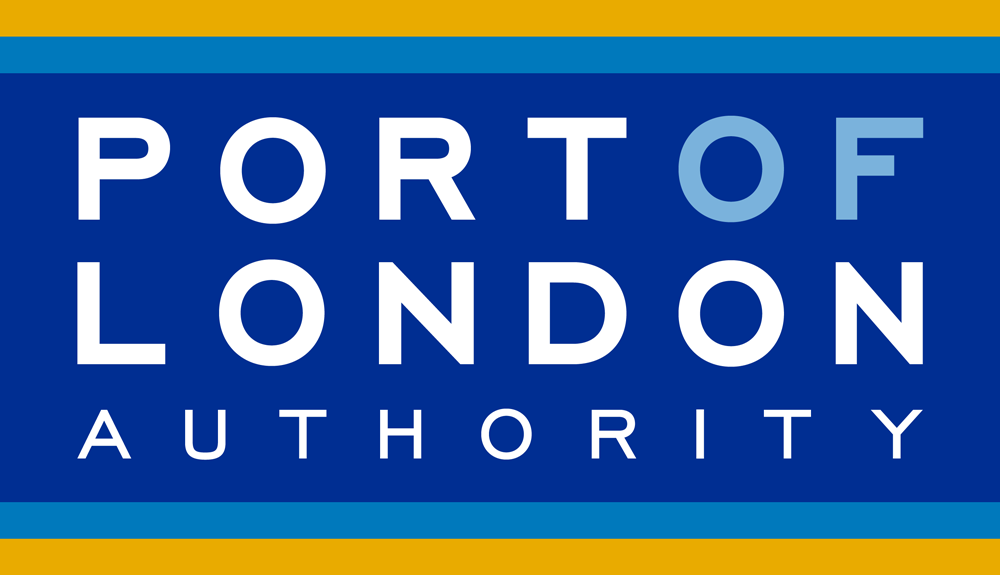Live Tides
NOTICES TO MARINERS
Charts & Surveys

Incident reporting
Life-threatening emergencies on the river:
Call 999 and ask for the Coastguard
For near miss, safety observations and incident reporting click below
Clean Thames Report 2025
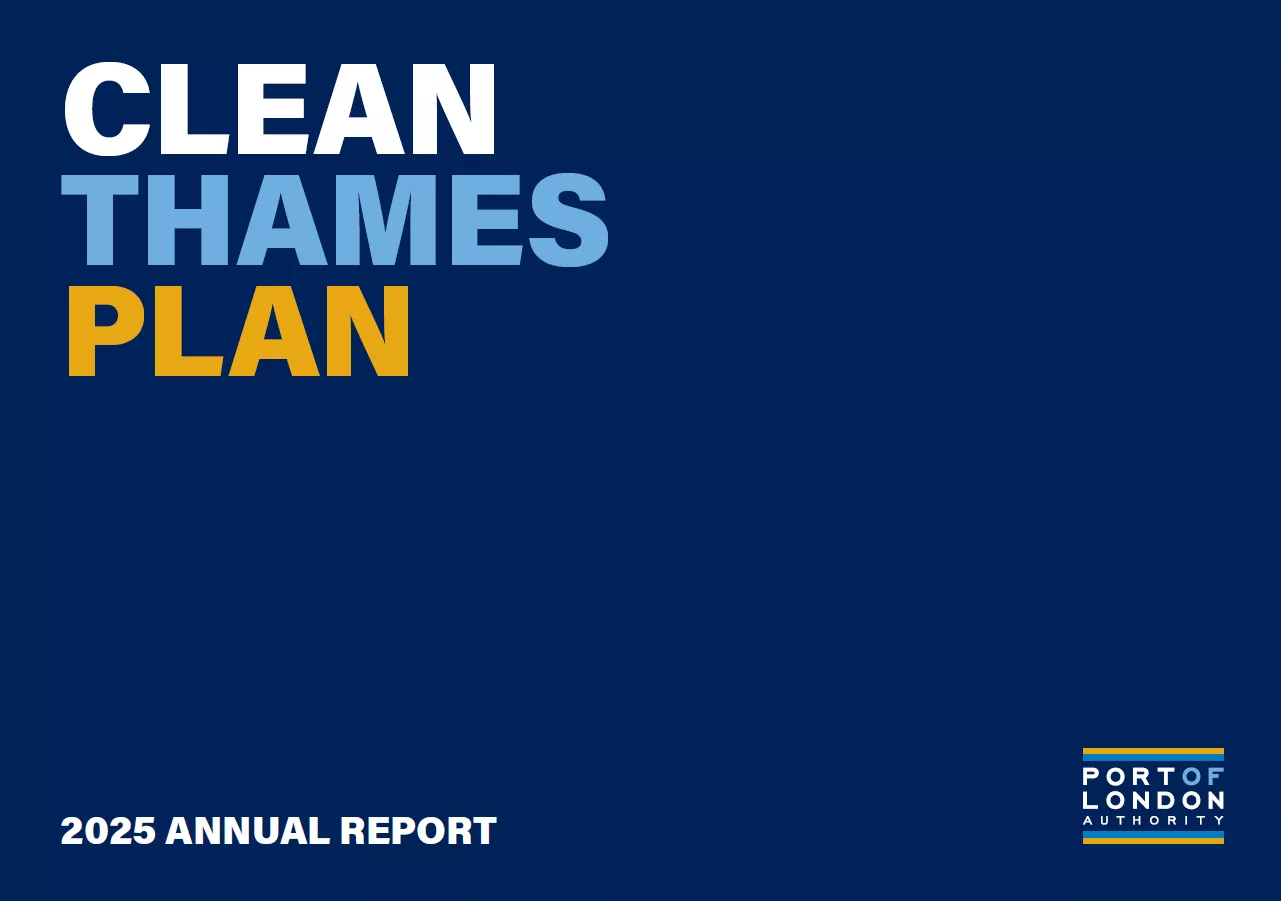
Related content
Tide Tables and Port Information 2026
Related content

Santa sails into Gravesend with early delivery for local primary school

Santa Claus made an early stop off to surprise children from Holy Trinity Church of England Primary School in Gravesend, with a little help – and a river ride – from the Port of London Authority, allowing Rudolph to rest up for the work ahead.
Pupils from years 2 and 3 came along to a festively decorated Town Pier in Gravesend, where the festival fun, craft, and Christmas carols took on an extra level of excitement when Father Christmas arrived on a PLA harbour service boat, to hand out some early Christmas presents.
Robin Mortimer, CEO of the PLA, said:
“As the UK’s biggest port, bringing in yuletide essentials and presents from around the world, the Port of London helps deliver Christmas each year. We worked with our friends at the Port of Lapland to arrange a special visit from Santa Claus himself and were delighted he was able to come and meet some special guests from Holy Trinity Primary School.”
The PLA has also today presented cheques to three local charities: £42,000 to the QVSR Seafarers’ Centre in Tilbury, £7,500 to ellenor hospice care in Gravesend, and £5,000 to Elliott Holmes Memorial Trust, which all provide support and help to people in our community all-year round.
Alexander Campbell OBE, CEO at the QVSR Seafarers’ Centre said:
"This donation will support the Tilbury Seafarers Centre to provide a warm welcome to seafarers visiting the Thames; giving them an opportunity to relax and take time away from the ship after many months at sea. We are hugely grateful for the support of the PLA throughout the year and especially at Christmas. Over 3,000 presents will be given to seafarers arriving in the port over the Christmas period, bringing some festive cheer to the men and women who are not only working over Christmas, but who are a long way away from their families and friends.”
Jemma Kemp, Corporate Partnerships Manager at ellenor, said:
“ellenor is truly grateful to the Port of London Authority for their generous donation and continued support over the past year, including sponsorship of our Christmas events and gifts for our patients. Gestures like this mean so much to the individuals and families we care for during the festive season.
“As one of the only hospices in our area supporting people of all ages, at home, in the community, and in our hospice. We know how important it is to create moments of calm and comfort when life feels unsettled, especially at Christmas. For families facing life-limiting illness, this time together becomes even more precious.
“Support from partners like the PLA enables us to offer families reassurance and meaningful moments during difficult times. We are incredibly grateful for their generosity, which helps us continue delivering our expert care to the community throughout the festive period and beyond.”
Peter Scutts, CEO of Elliott Holmes Memorial Fund, said:
"We are hugely grateful for the Port of London Authority's £5,000 donation. As a long-established local company, PLA is deeply rooted in the Gravesham's community and dedicated to investing in its young people. Their support will allow us to help some of the most vulnerable young people in Gravesham get the vital support they need."
To arrange the special visit from Santa, the PLA also received support from local businesses, including Thames Clippers, KM Facilities Management Group and NOW Construction.
Related content
Location: London/Gravesend Remuneration: £28,971 per annum for a commitment of up to 24 days per...

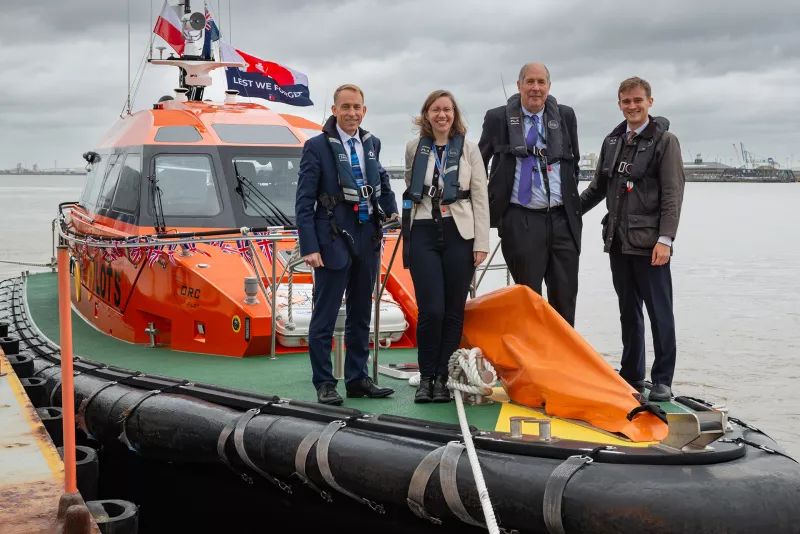

NED, Engineering | Construction | Infrastructure experience
Location: London/Gravesend Remuneration: £28,971 per annum for a commitment of up to 24 days per annum
The Port of London Authority (‘the PLA’) is custodian of 95 miles of the tidal Thames from Teddington Lock to the North Sea, home to the UK’s biggest port, central to the country’s economy. The port contributes over £4bn to the economy and sustains over 40,000 jobs. The PLA has responsibility for the safety of navigation, promoting use of the river and for supporting its unique marine environment.
The Thames Vision 2050 sets out our goal of being the UK’s leading port, central to the economy, with Net Zero emissions. Created by the PLA with its stakeholders, the Vision targets the long-term development of the Thames as a trading hub, community and natural haven.
The PLA’s headquarters is in Gravesend, Kent, with an office in the City of London. The PLA also has operational centres in several other locations along the Thames.
The PLA Board currently consists of seven Non-Executive Board Members, one of whom is appointed as Chair, and three Executive Members (Chief Executive, Chief Harbour Master and Chief Financial Officer). Of the current seven Non-Executive Board Members, three are Department for Transport (DfT) Ministerial appointees and four are PLA appointees.
The Board is looking to appoint a Non-Executive Board Member (DfT appointment) who has:
• Recent or current experience in engineering construction and building infrastructure development with proven success in large commercial developments.
• Experience of operating successfully at board or equivalent level in a high-profile organisation with a good awareness of their own strengths and capabilities and how these complement other board members.
• An ability to contribute to discussions regarding the Lower Thames Crossing and the wider commercial growth of the Thames.
• A strong team player and good strategist with high integrity and excellent communication skills, able to offer both support and constructive challenge to the PLA executive.
• An understanding of risk management and how risk assessment is used in decision making, particularly in a commercial context and in relation to safety.
Veredus is acting as an executive search and selection advisor to the PLA on this appointment.
To book a confidential discussion, please contact Veredus, our Executive Search and Selection Advisor: [email protected] or [email protected]
Apply here
Closing date: 5pm Friday 9 January 2026
Related content




Port of London sees growth as US tariff-free ethanol imports reach highest ever levels
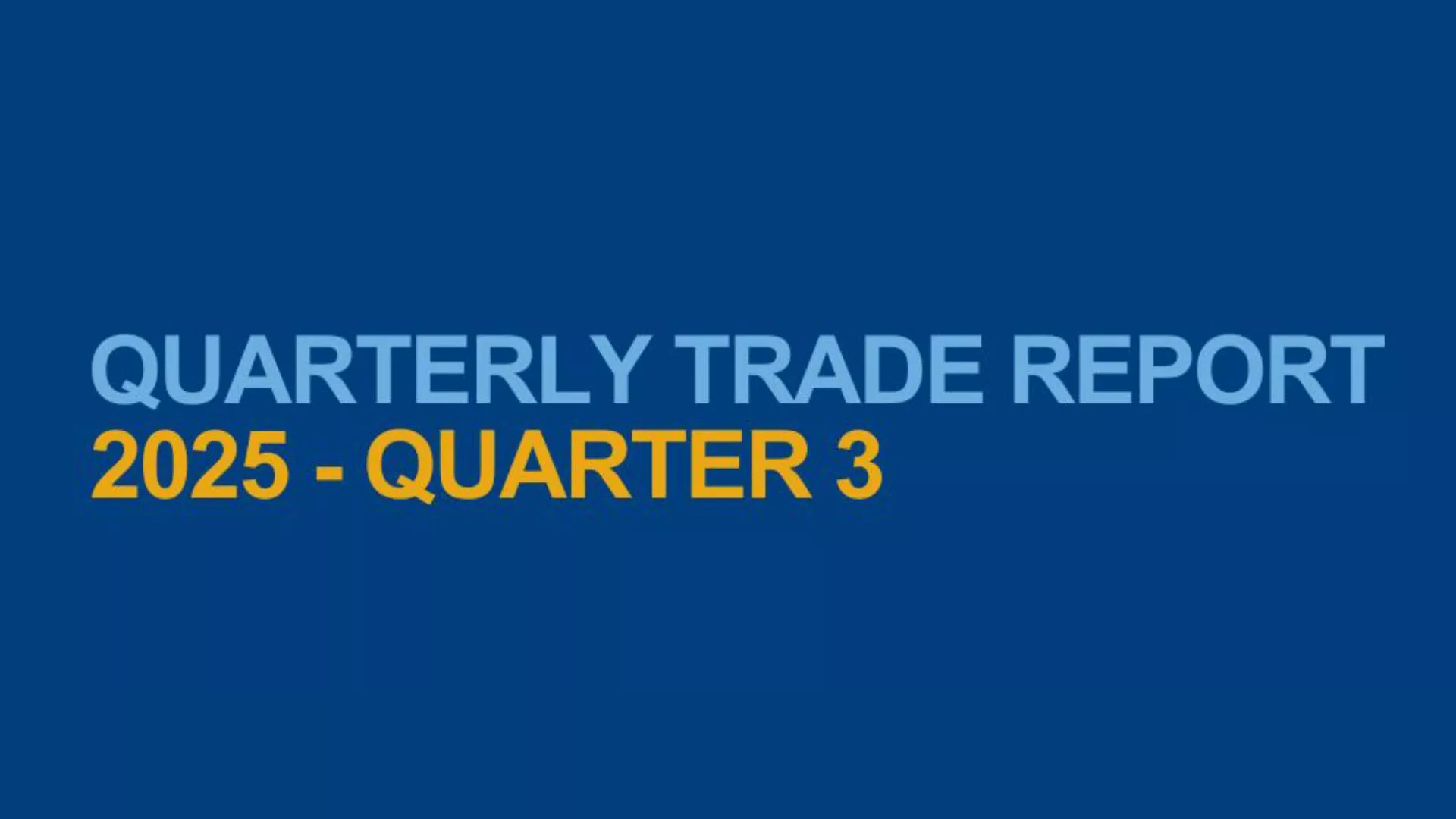
- Port of London sees third consecutive quarter of growth
- Trade in aggregates and building materials fell and are 9% below levels last year
- There have been spikes in imports of oil and ethanol
The Port of London Authority’s quarterly trade report shows there was 14.7m tonnes of trade through the port in the three months to end September – representing the third consecutive quarter of growth.
As is usual, trade continued to be heavily made up of imports – accounting for about 80% of trade. However, exports are running at higher than they were last year. The strength of trade in container vessels continues to be maintained, too, making up 51% of all tonnage through the port this year.
While trade in aggregates and products used in construction have fallen, there have been notable spikes in the trade of oil, where imports increased by 19%, and ethanol, which saw a marked increase to the highest ever recorded level through the port.
The rise in imports of ethanol - key to the UK’s efforts to move towards sustainable aviation fuel - comes after the UK and US agreed a tariff-free import quota for US ethanol, and at a time when UK ethanol production seems to be winding down.
Steve Lockwood, CFO at the Port of London Authority, said:
“Trade through the Port of London remains strong and to see quarter-on-quarter growth yet again speaks to the resilience and attractiveness of the port.
“The diversity of trade – with significant growth in oil and, in particular, ethanol, seems to follow the geo-political moves relating to trading tariff arrangements. While these situations evolve, it is encouraging to see global trade is seeing and embracing the opportunities of coming through the UK’s biggest port.”
Related content

Location: London/Gravesend Remuneration: £28,971 per annum for a commitment of up to 24 days per...


Code of Conduct for High-Speed RIB Operations
Related content
PLA celebrates two boats with blessing ceremony
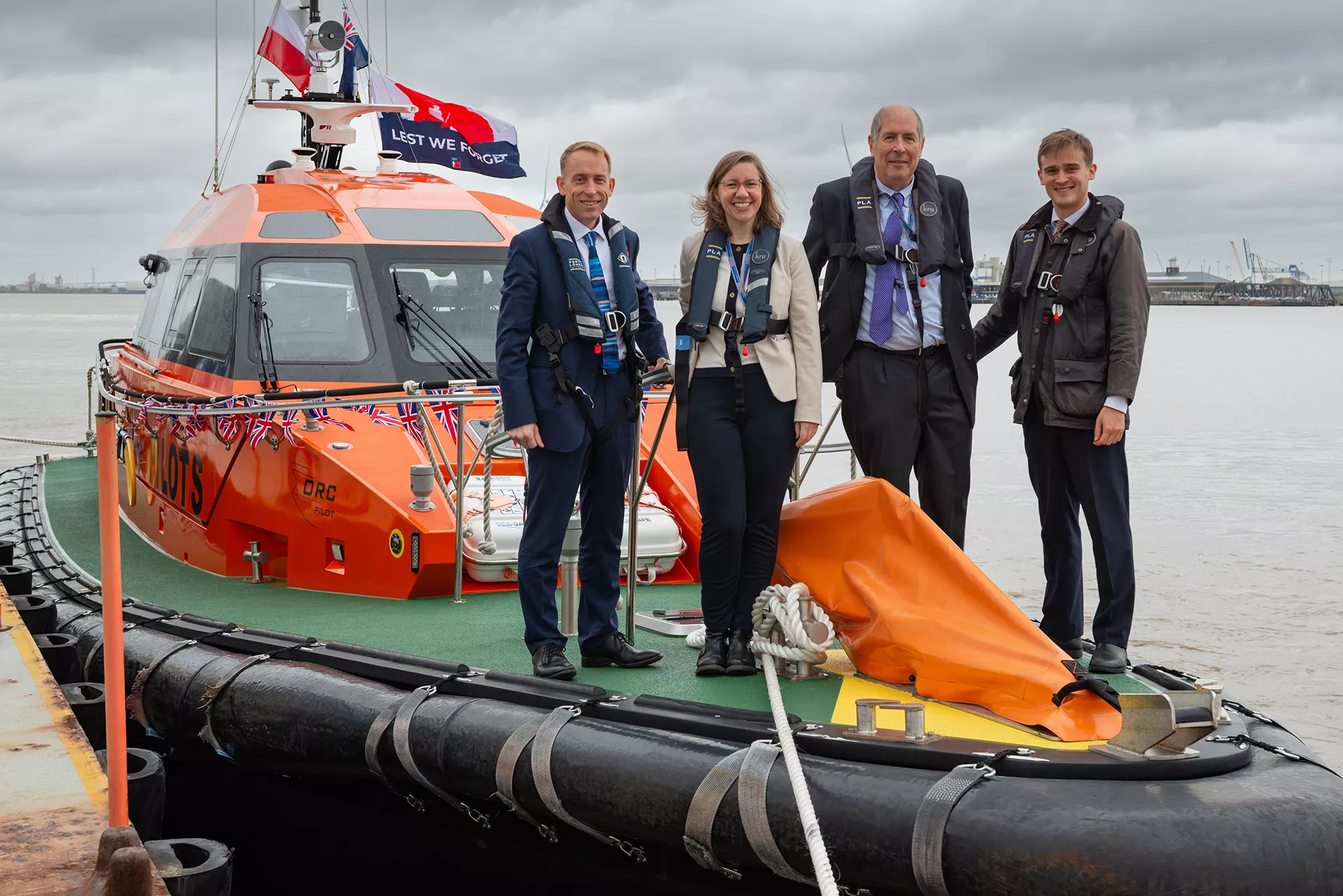
The Port of London Authority welcomed the Maritime Minister to its Headquarters in Gravesend as it formally unveiled its two newest service boats as part of its ongoing investment to support growing trade through the UK’s biggest port.
The state-of-the-art boats – named Commander and Leader – are pilot cutters, meaning they will be used to make sure river and sea pilots are able to quickly and safely meet vessels entering the port from all over the world, and to safely bring them into berth.
The boats went through the tradition of being formally named at ceremony where they were blessed, given a Godmother, and christened with a bottle of champagne.
Gravesham MP, Dr Lauren Sullivan, was invited to become Godmother of Leader and a long-serving member of the PLA team, Marine Office Manager, Barbara Jewiss, was recognised for her two-decades of tireless support to the PLA operation, as she became Godmother of the Commander.
Keir Mather, Minister for Aviation, Maritime and Decarbonisation, oversaw the ceremony, before being given the opportunity to take a ride on Commander, seeing it’s functionality and how it will serve customers in the port. He also had a tour of the operational facilities that help operate the UK’s biggest port.
Both Commander and Leader were built in the UK and will operate on 100% Hydrotreated Vegetable Oil biofuels.
Robin Mortimer, PLA’s Chief Executive, said: “The naming of our two latest vessels is a great moment to reflect on our ongoing commitment to the region and how we are investing to support growth. The boats are state-of-the-art, green, and were built in the UK. We were delighted to be able to share the moment with the new minister, Gravesham’s MP, and also to recognise the dedication and skill of our workforce, with one of our own, Barbara Jewiss, becoming Godmother to one of the boats, too.
“This investment will help us to provide even better service to our customers, and to quickly and safely help ships which arrive from all over the world to berth, boosting trade and doing so in a way that promotes sustainability.”
Maritime Minister, Keir Mather, said: “The UK’s maritime sector powers over £100bn in trade, supports hundreds of thousands of jobs and drives growth nationwide.
“It was great to join the Port of London Authority who are investing in places like Gravesend to drive growth and real change. We're backing British maritime including with £448m in green investment - boosting jobs and innovation to deliver our Plan for Change.”
Dr Lauren Sullivan, MP for Gravesham, said: "I am incredibly proud to have the Port of London Authority headquartered in my constituency of Gravesham, and it was a privilege and honour to be asked to be the Godmother to the vessel Leader at the naming and launch ceremony.
“The Port of London Authority supports, directly and indirectly, through its oversight of one of the most famous rivers in the world, so many local maritime and shore jobs, businesses and industries as well as those using the river for sport and leisure. This investment in new vessels, will inevitably benefit river users in Gravesham and further afield, which is essential for our river and coastal communities in the Thames Estuary."
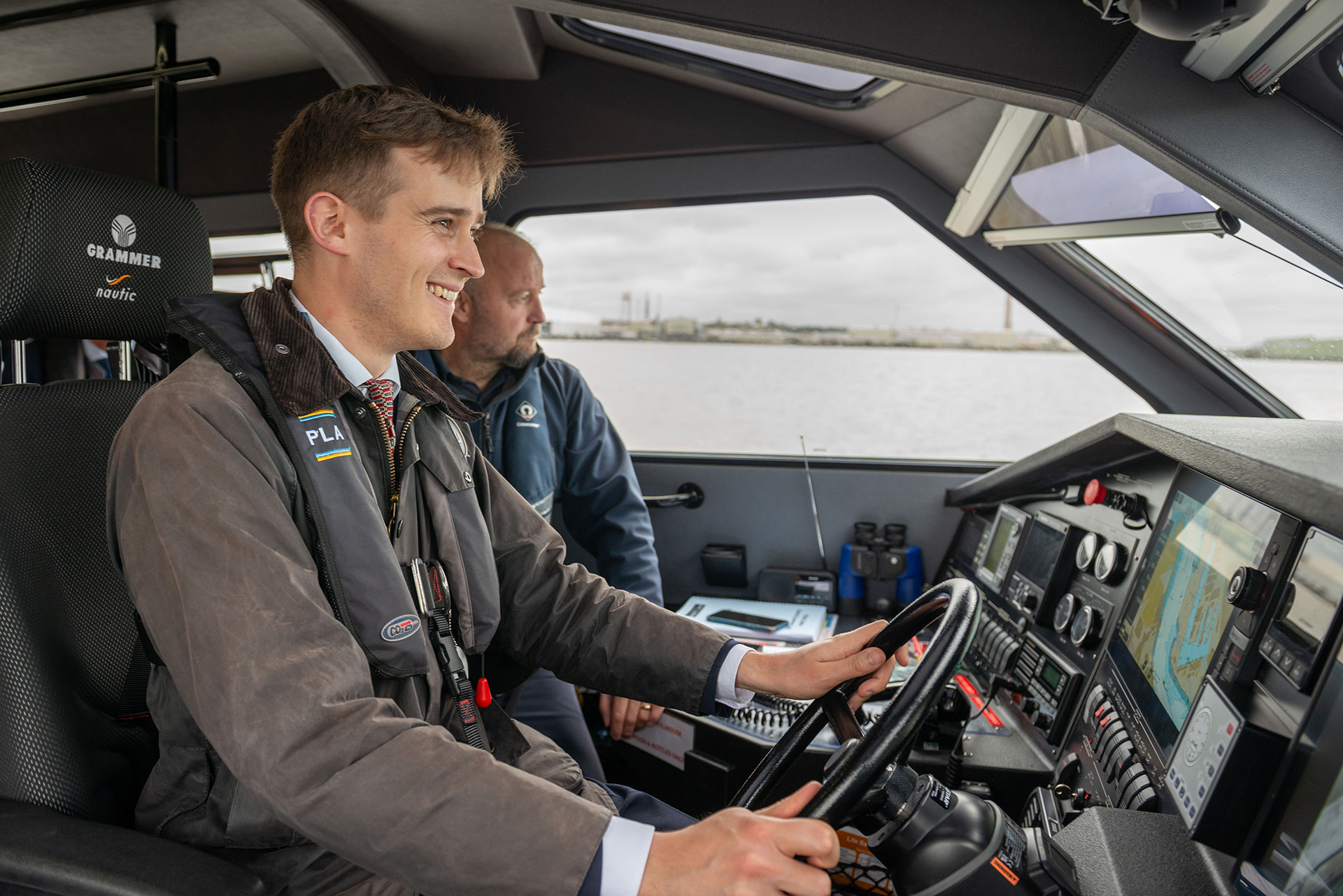
Keir Mather, Minister for Aviation, Maritime and Decarbonisation on board Commander
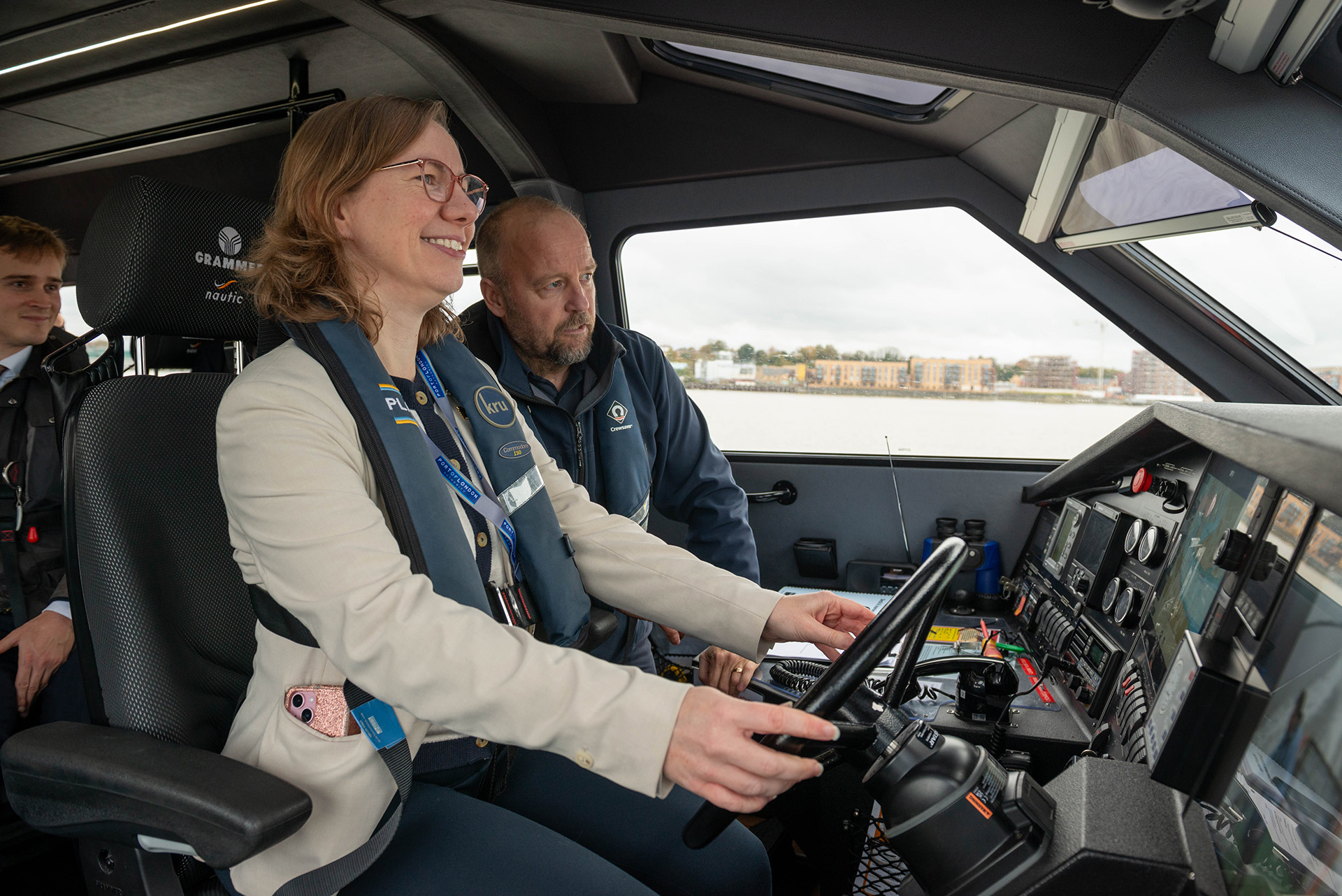
Gravesham MP, Dr Lauren Sullivan on board Commander
Related content

Location: London/Gravesend Remuneration: £28,971 per annum for a commitment of up to 24 days per...


Meet the PLA's new trainee pilots
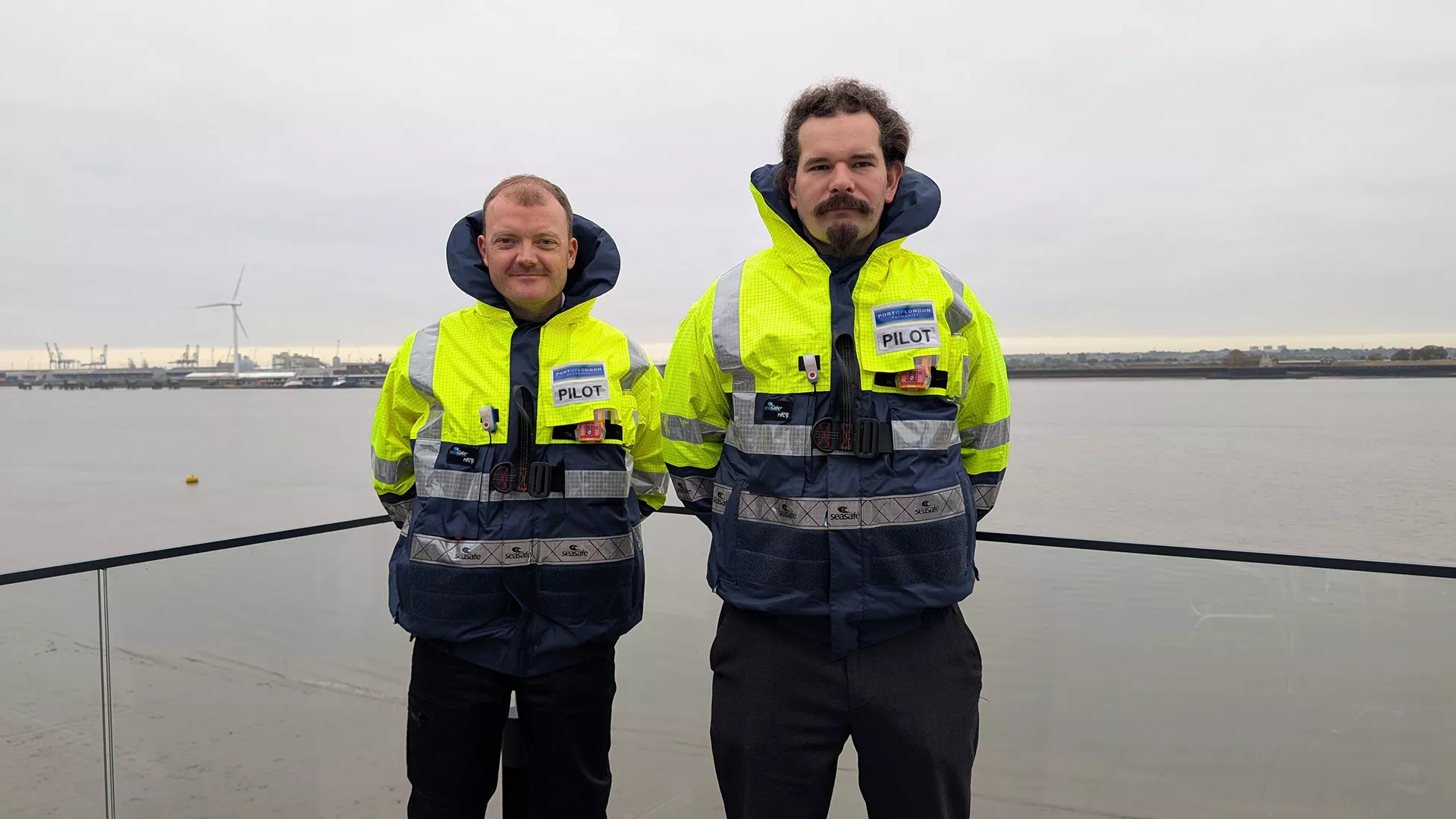
We’re pleased to welcome our latest intake of trainee marine pilots David Mills and Axel Schaipp to the PLA. Together they bring valuable seafaring experience, proven skills, and a real enthusiasm for working on the water. The Thames is among the most demanding pilotage environments anywhere, and we’re confident they will meet the challenge.
We wish them every success as they begin their training and look forward to seeing them progress in their new roles.
David Mills
David has built a career spanning oil, gas and container shipping, before moving into cruise ships and superyachts for the latter part of his time at sea.
His interest in ship handling and navigation made pilotage a natural progression, and he is particularly drawn to the Thames for its variety and challenges as a working river. David looks forward to learning the river in depth and to the ongoing professional development the role offers.
Away from work, his interests include watching rugby, riding motorbikes and sailing.
Axel Schaipp
Originating from Germany, Axel’s career began with six months as a trainee on a square rigger while still at school, followed by two years in the German Navy as a reserve officer. He went on to earn a BSc degree in Plymouth and completed a cadetship with CMA CGM, later sailing as a 3rd Officer with the company. His career path has since taken him back to square riggers, through chief mate and master qualifications, and into the windfarm sector. Over time he progressed from Master 500 to Master 3000, and eventually to Master Unlimited, combining command experience in both sail and offshore operations.
Axel’s motivation to become a pilot comes from his enjoyment of vessel manoeuvring and the challenge of handling a wide variety of ships. The role also allows him to be closer to family, something he greatly values.
In his free time, Axel enjoys Historical European Martial Arts, horse riding and sailing small boats.
Related content

Location: London/Gravesend Remuneration: £28,971 per annum for a commitment of up to 24 days per...


The Thames – a working, living, thriving river
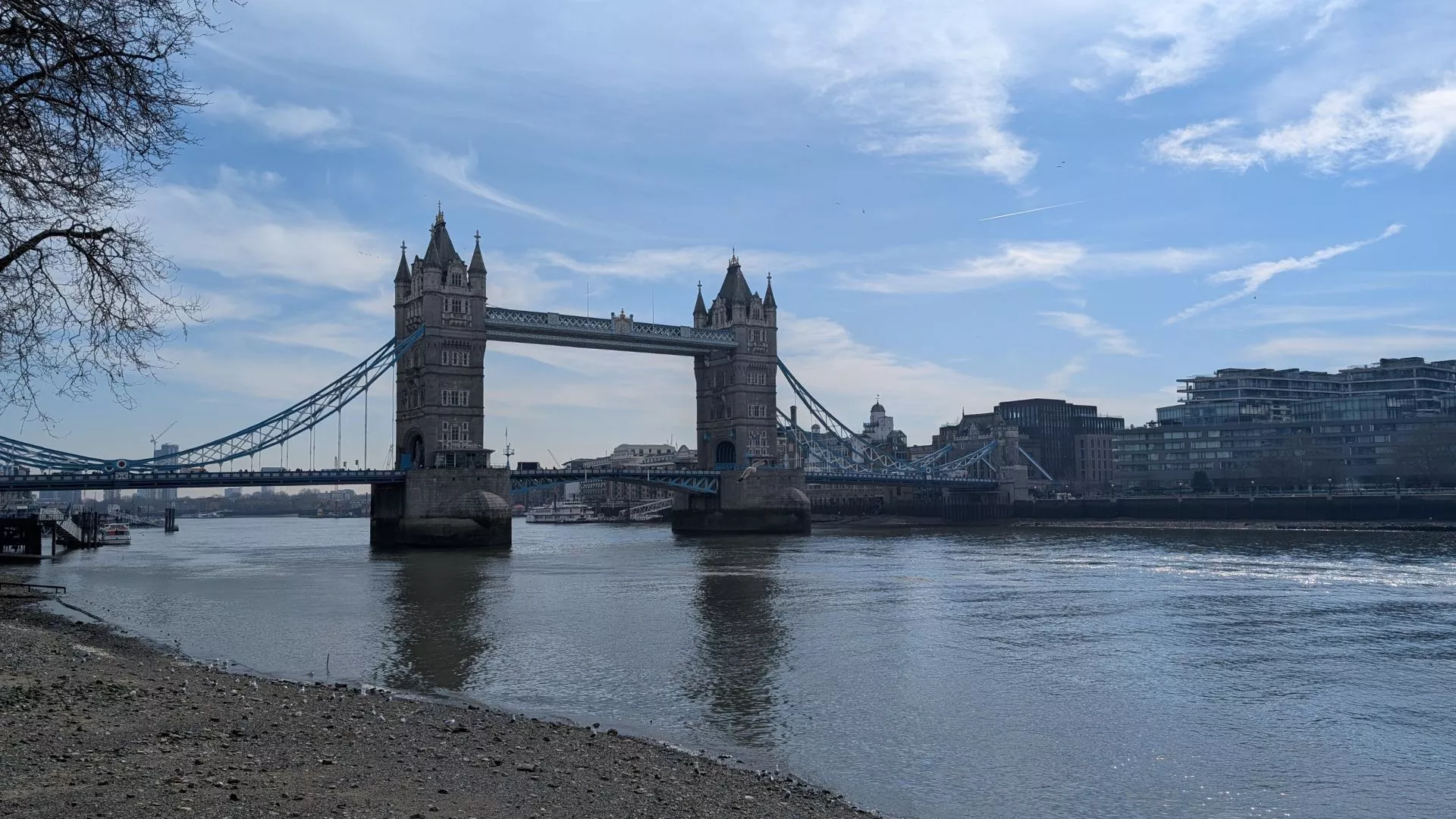
Destination Thames – one of the three key pillars of our Thames Vision 2050 strategy - could be a strapline for the whole of London International Shipping Week.
From the location for LISW’s headline conference at the International Maritime Organisation’s HQ at Vauxhall and the venue of its Gala Dinner in Battersea Park, to the Port of London Authority’s own Sustainability & Innovation showcase afloat on the river, the tidal Thames has been a backdrop to so many of the meetings, events and conversations this week.
It’s a working river. We’re the UK’s biggest port and busiest inland waterway; our customers connect the UK with the rest of the world, generating billions for the UK economy and supporting 48,000 jobs.
It’s a living river. Millions of tourists’ visits to London wouldn’t be complete without a boat trip, a view from the London Eye, or tour of the museums at Greenwich. Many more millions of people, drawn from diverse communities, live, exercise or relax on and alongside it.
It’s a thriving river. The tidal Thames’ story is one of recovery. After being declared biologically dead in the 1950s, it’s now home to everything from seals to seahorses, and diverse natural habitats.
At the Port of London Authority, we’re responsible for protecting and improving the tidal Thames for all.

We’re proud to welcome London International Shipping Week delegates from all over the world to our Port. Just think of us when you’re pausing for a selfie overlooking this iconic river!
-- Siân Foster, PLA Director of Corporate Affairs
Related content

Location: London/Gravesend Remuneration: £28,971 per annum for a commitment of up to 24 days per...


A port with sustainability at its core
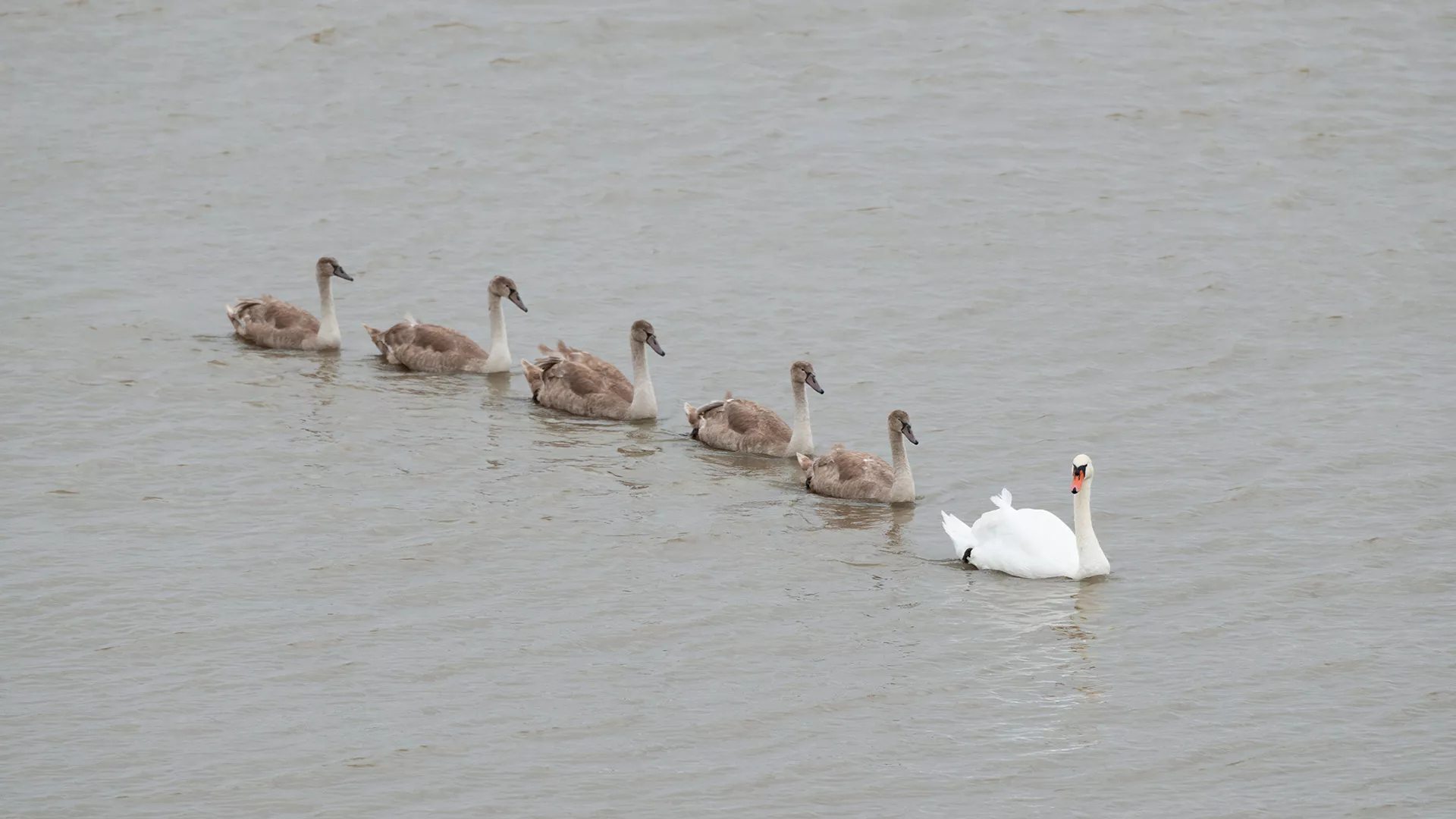
One of the things I love most about working for the Port of London is that it serves as a meeting point for three hugely important and very different issues: growth and trade, supporting the communities who live and work alongside the port, and promoting sustainability.
What is clear to me is that they each rely on the others. To make long-term positive moves on one of these areas; we have to make long-term positive moves on all of these areas.
I think people are sometimes surprised at our commitment to that idea, and particularly our commitment to sustainability. Not unreasonably, people often think about the UK’s biggest port in terms of our role in the economy, in enabling businesses to grow, and in supporting jobs and local communities.
But the PLA is a lot more than a conventional port. We are also privileged to have a responsibility to care for the 95 miles of the tidal Thames, from Teddington Lock on the border of Surrey through London, Kent, Essex and out to the North Sea.
To help us do that, we have status as what is called a Trust Port. That means we hold the port – and the river – in trust. We have no shareholders or targets for dividend payments; only a commitment to reinvest the money we make to improve the tidal Thames and support those who live and work alongside it.
Another of the things I love about working at the PLA is how we do that. We align innovation, investment, and ambition to work towards securing a cleaner river, with cleaner air, supporting a resilient river and port. And we aim to become the UK’s first net zero port by 2040.
What does that mean in practice? Well, often we do things – both big and small – that others can’t. For example, we permitted and licenced the Tideway super sewer, we remove 250 tonnes of rubbish from the river each year, we led a first-of-its-kind project to get rid of 5 million wet wipes from the foreshore of west London, we introduced a green tariff for cleaner ships and boats coming to port, we are working with UCL to cut microplastics entering the river, we are actively supporting projects that aim to bring electric vessels to the river, and we act to improve natural environments such as by restoring saltmarshes and other priority habitats.
We do all of this and more in a way that aligns with our commitment to back and enable growth and support local communities, while ensuring we pass on the River Thames in a healthier condition than we found it.
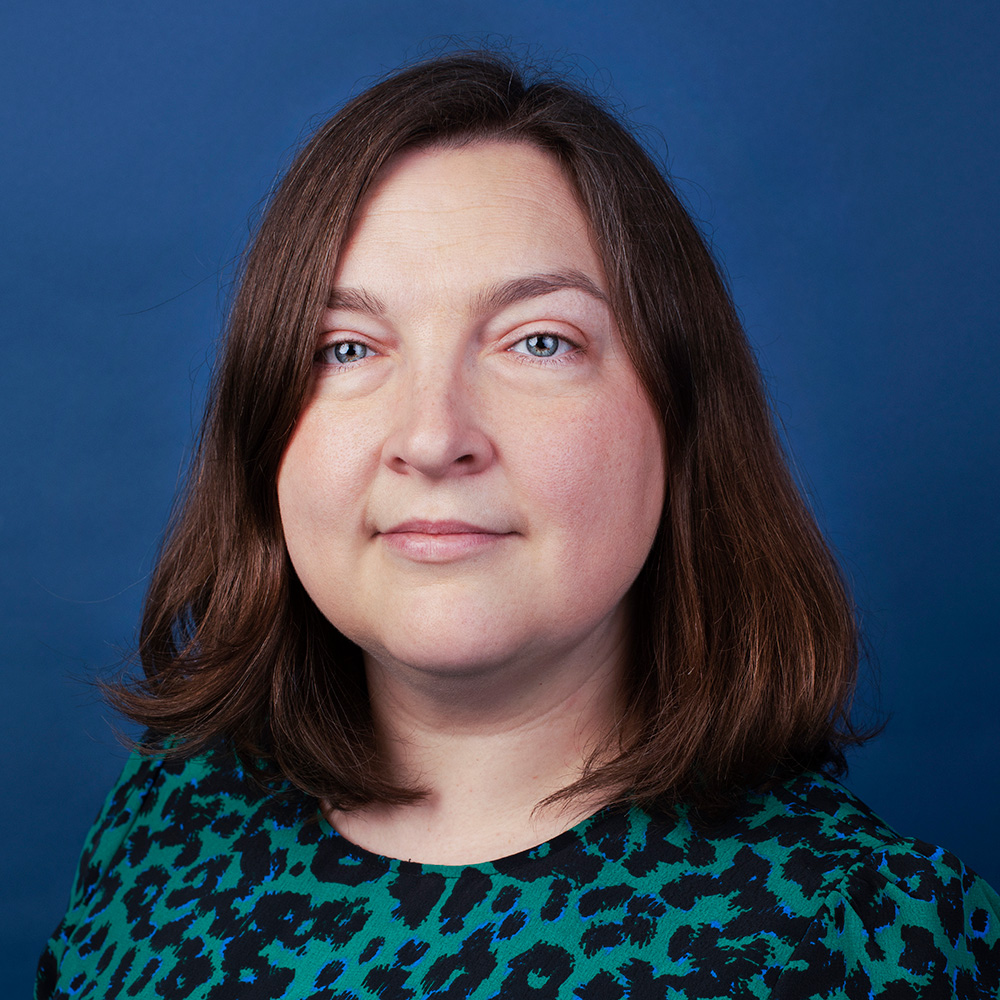 Can you see why I love working here?!?
Can you see why I love working here?!?
-- Grace Rawnsley, PLA Director of Sustainability
Related content

Location: London/Gravesend Remuneration: £28,971 per annum for a commitment of up to 24 days per...


Discover






